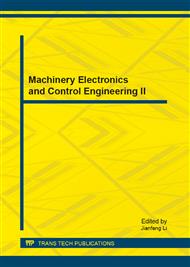p.3
p.7
p.11
p.15
p.20
p.27
p.31
p.37
Research of Electric Radiator Design Based on DFMA Method
Abstract:
Aimed at optimizing electric radiators design process, the enterprises expectationsmanufacturing technologies and market developing status were analyzed, then electric radiators key design restraining factors were summarized, design orientation was proposed finally. Based on this premise, a block-based electric radiator design scheme was presented with the Design For Manufacture & Assembly method (DFMA), then taking electric radiators key structure and part as an example , the application of DFMA in design practice was discussed in the view of coordinating the relation of product styling effect and structure design. Practices show that DFMA method is beneficial to improve design efficiency and feasibility.
Info:
Periodical:
Pages:
11-14
Citation:
Online since:
March 2013
Authors:
Keywords:
Price:
Сopyright:
© 2013 Trans Tech Publications Ltd. All Rights Reserved
Share:
Citation:


